From the 1950s through the 1960s, public imagination was deeply captivated by the space race and a growing fascination with a high-tech future. This futuristic outlook found a powerful outlet in automotive design, giving rise to what’s now known as the Space Age style. Cars from this era looked like they’d been ripped from the pages of a science fiction comic: sweeping curves, dramatic tailfins, bubble windshields, gleaming chrome, and cockpits modeled after aircraft. Every detail aimed to evoke speed, modernity, and above all, a bold, futuristic vision where anything seemed possible.
Concept cars like the Lincoln Futura, Chrysler Turbine, and General Motors Firebird III looked more ready for liftoff rather than for going on your average drive. Unsurprisingly, many of these wild designs would have looked perfectly at home in The Jetsons, with its sky-high cities and flying vehicles. These cars weren’t just meant to impress; they embodied an optimistic vision of tomorrow, where style and technology merged into a dream of the future on four wheels. As the gallery below shows, some carmakers were already chasing that dream long before the moon landing. We selected the 12 cars that impressed us the most.
1. Alfa Romeo 40-60 HP Aerodinamica (1914)
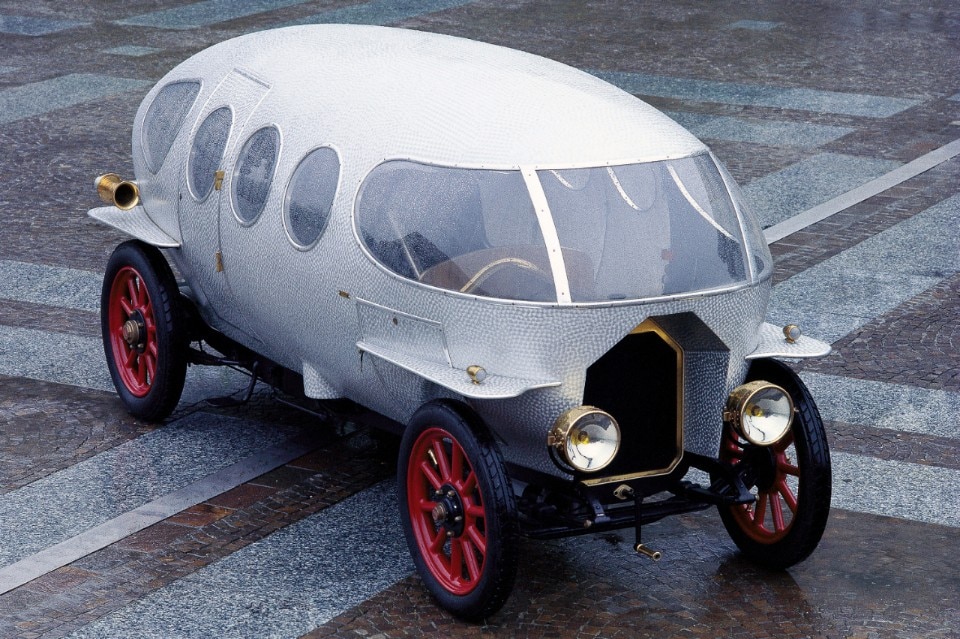
Also known as the “Siluro Ricotti,” this 1914 extraordinary experimental car featured aerodynamic bodywork by Carrozzeria Castagna and was decades ahead of modern concept of car design. Its streamlined profile, inspired by the earliest aerodynamic studies, dramatically reduced drag. Powered by a 6-liter, 70-horsepower four-cylinder engine, it reached a top speed of 139 km/h: an astonishing figure for the era. A symbol of forward-thinking design, it’s now displayed at the Alfa Romeo Museum in Arese, a testament to Italian engineering brilliance.
2. Lincoln Futura (1955)
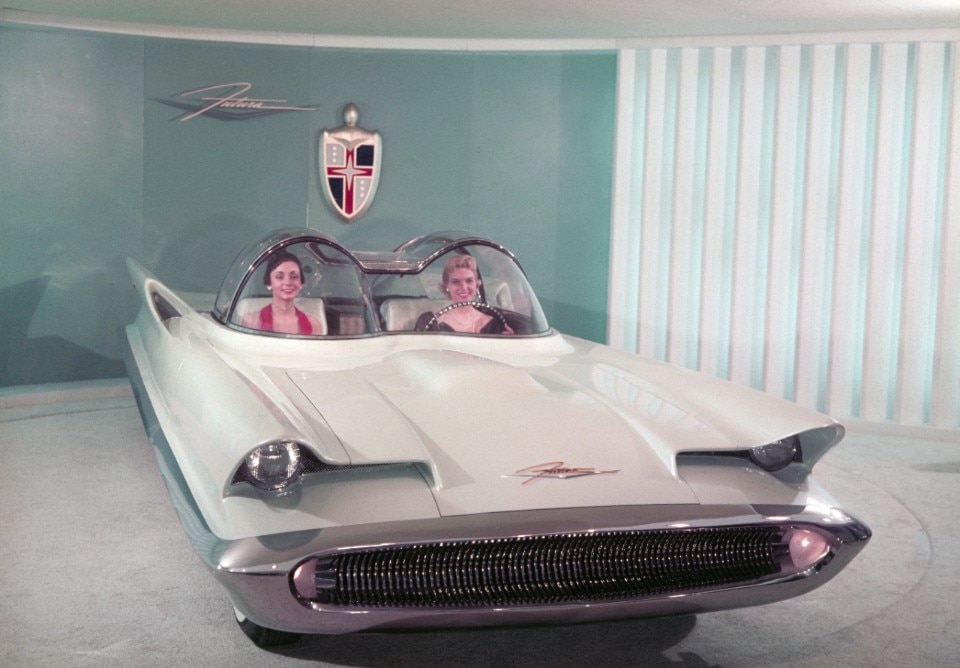
Created in 1955 by Bill Schmidt and built by Ghia in Turin, the Lincoln Futura was a pioneering concept with sweeping tailfins, Plexiglas domes, and space-inspired lines. Though it was never put into mass production, it achieved pop-culture immortality when customizer George Barris transformed it into the Batmobile for the 1966 TV series. A true cult icon, it sold at auction in 2013 for around $4.6 million.
3. Ford X-2000 (1958)
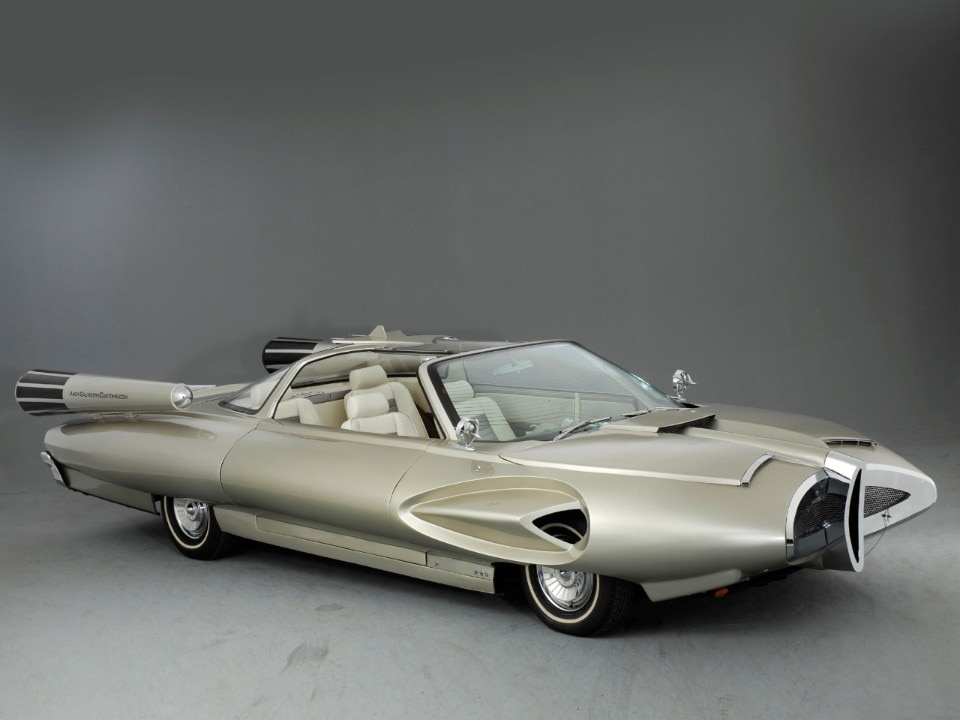
The Ford X-2000 was a futuristic prototype built in 1958 as an interpretation of what the year 2000 might look like, according to the 1950s imagination. Styled after jets and spacecraft, it featured exaggerated tailfins, oversized chrome bumpers, and a bold, gaping grille. Never intended for production, it’s a classic example of the retro-futuristic flair that defined the era’s optimistic outlook and the American car dream.
4. General Motors Firebird III (1959)
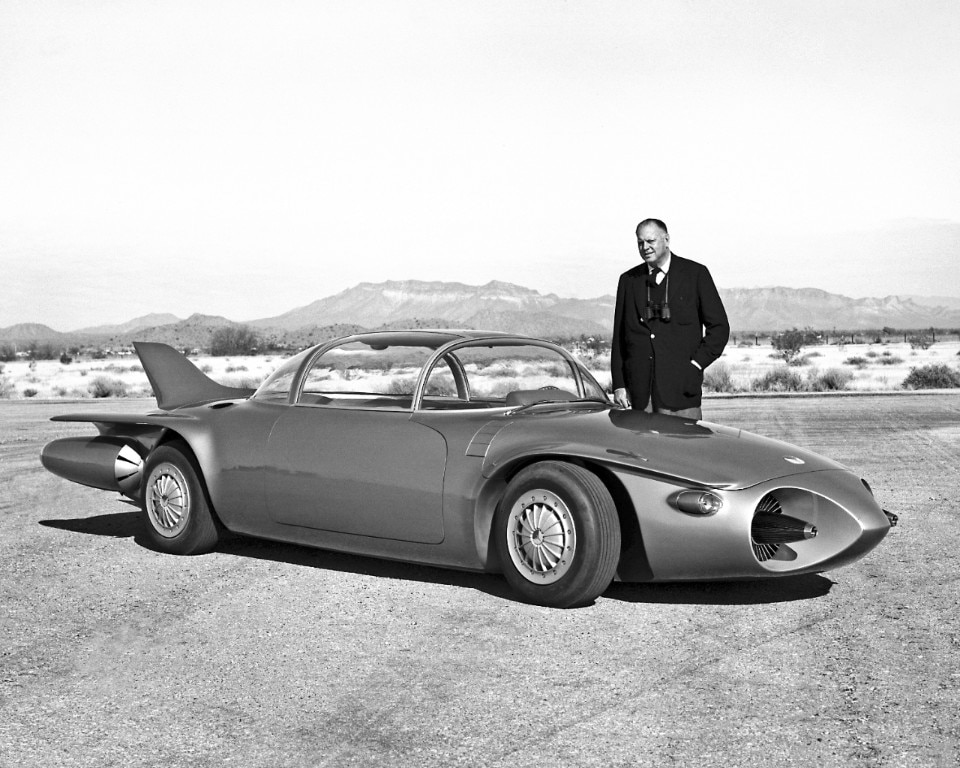
Unveiled in 1959, the Firebird III was the third and final concept in General Motors’ jet plane-inspired series. It featured a fighter-jet-like body with folded wings, joystick steering, and early driver-assist technologies. Stylistically extreme with its dramatic fins and dual bubble canopies, it was part of a concept series that explored the mobility of the future. It was the centerpiece of GM’s Motorama shows – a traveling exhibition that celebrated futuristic automotive design from 1949 to 1961.
5. Pininfarina X (1960)
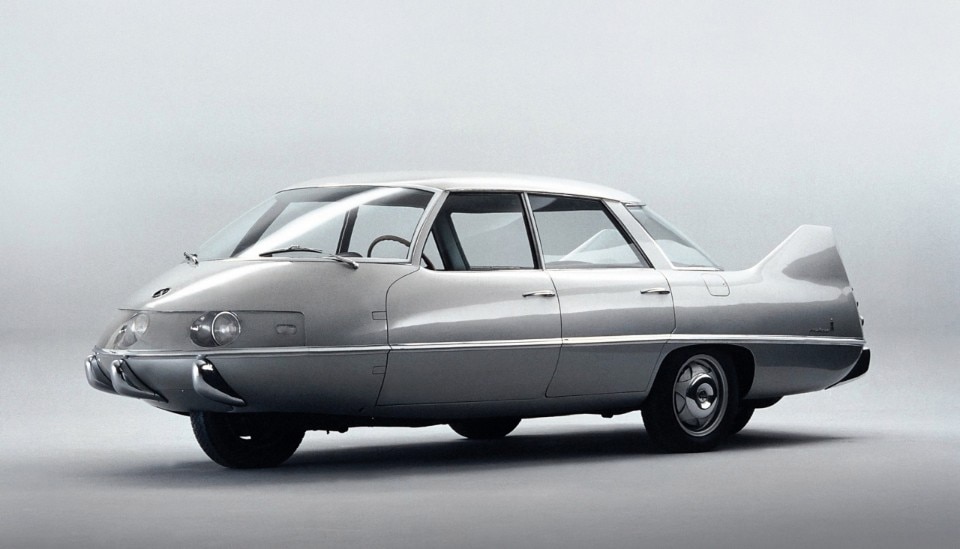
Presented in 1960, the Pininfarina X was a visionary prototype created for Pininfarina by designer Franco Scaglione – the same talent behind the Bertone B.A.T. series. With its extreme teardrop silhouette and slender, symmetrical design, the X was designed for max aerodynamic efficiency. Its drag coefficient was remarkably low for the time, anticipating modern concerns that would dominate automotive design decades later. Starting on the mechanics of the Lancia, the X never reached production but remains a landmark in Italian design innovation.
6. Chrysler TurboFlite (1961)
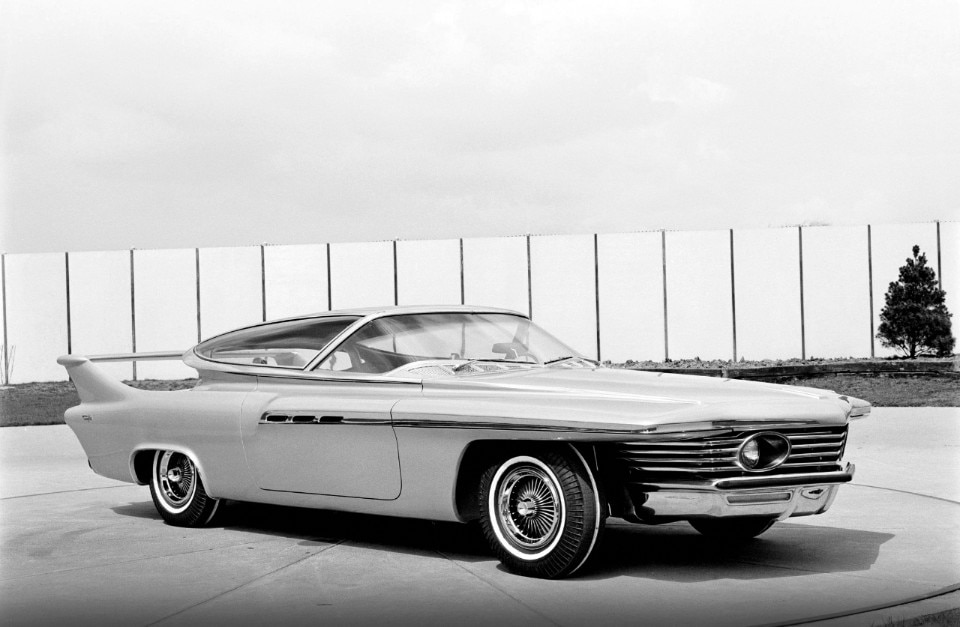
First shown in 1961, the Chrysler TurboFlite was a turbine-powered concept commissioned by Chrysler and designed by Carrozzeria Ghia. With its chopped tail, lift-up bubble roof, and retractable bumpers, it presented an optimistic vision of the near future. Though it never reached production, the TurboFlite stands as a symbol of design experimentation and the turbine car craze that swept through the 1950s and ’60s – that captivated Fiat as well.
7. Ford Gyron (1961)
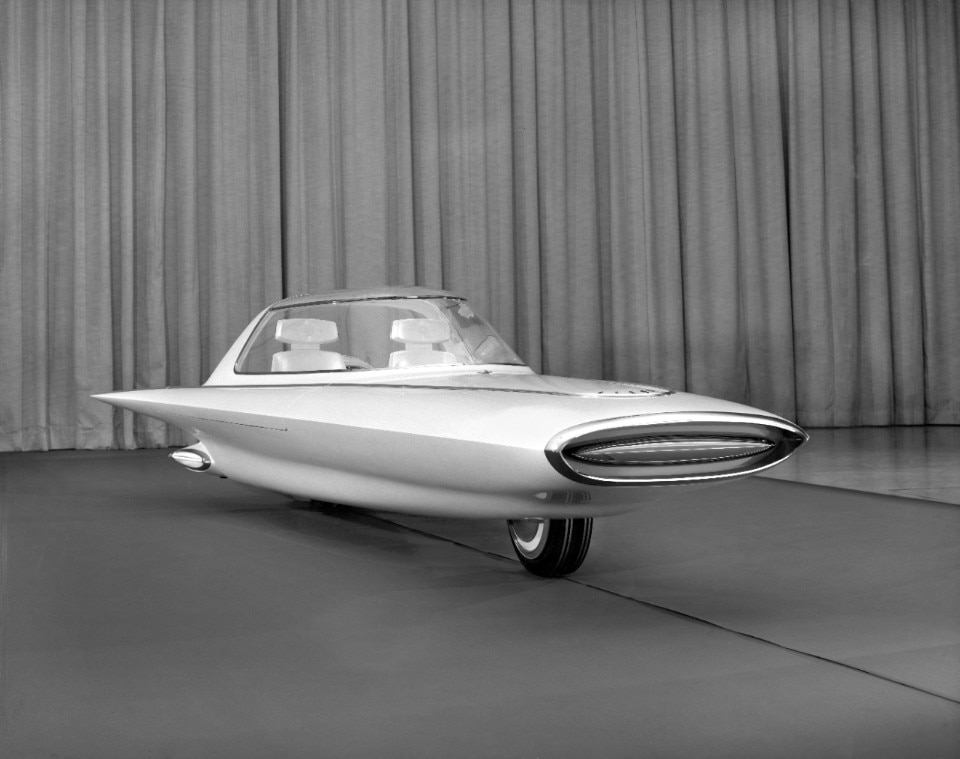
The Ford Gyron, presented in 1961, was a two-wheeled car that balanced itself using a gyroscopic system. Result of Ford futuristic vision and designed by Syd Mead and McKinley Thompson, the prototype was never functional and existed only as a static model. Destroyed in a fire, the Gyron is a symbol of radical thinking in urban mobility that lives on through a few surviving scale models.
8. Chrysler Turbine (1963)
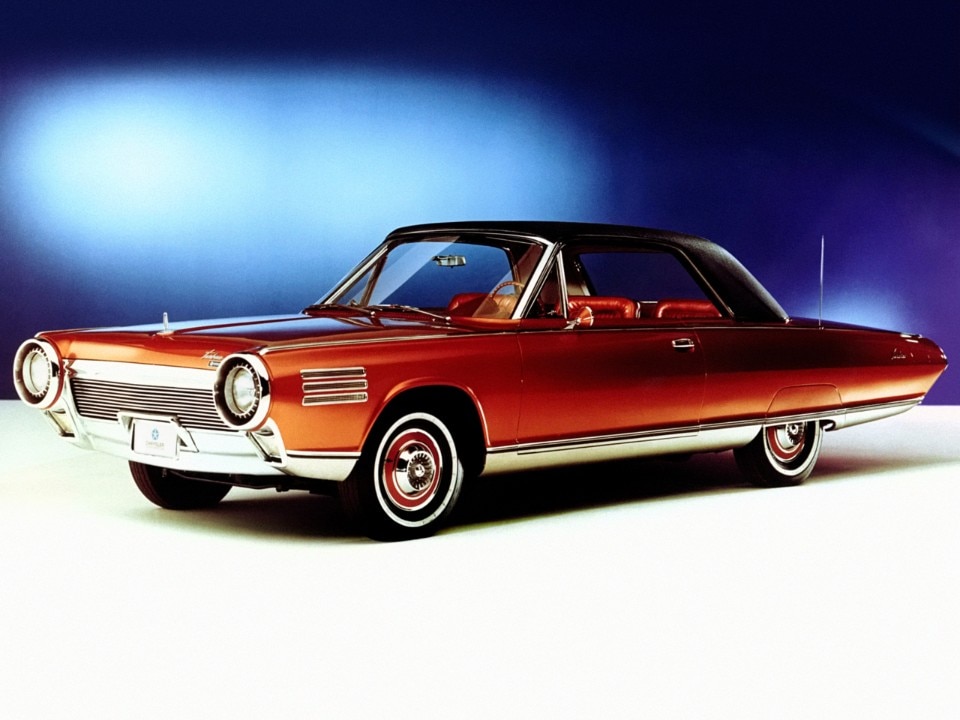
Unlike most concept cars on this list, Chrysler actually built 55 Turbine cars in 1963. Powered by a 150-horsepower turbine engine capable of running on multiple fuels, it produced a maximum torque of 570 Nm. For the time, the style was elegant and modern, with sleek styling by Carrozzeria Ghia. However, the high costs and obvious practical issues cut its journey short: 46 of the 55 units were destroyed, making it one of America’s most intriguing postwar automotive experiments.
9. The Reactor by Gene Winfield (1965)
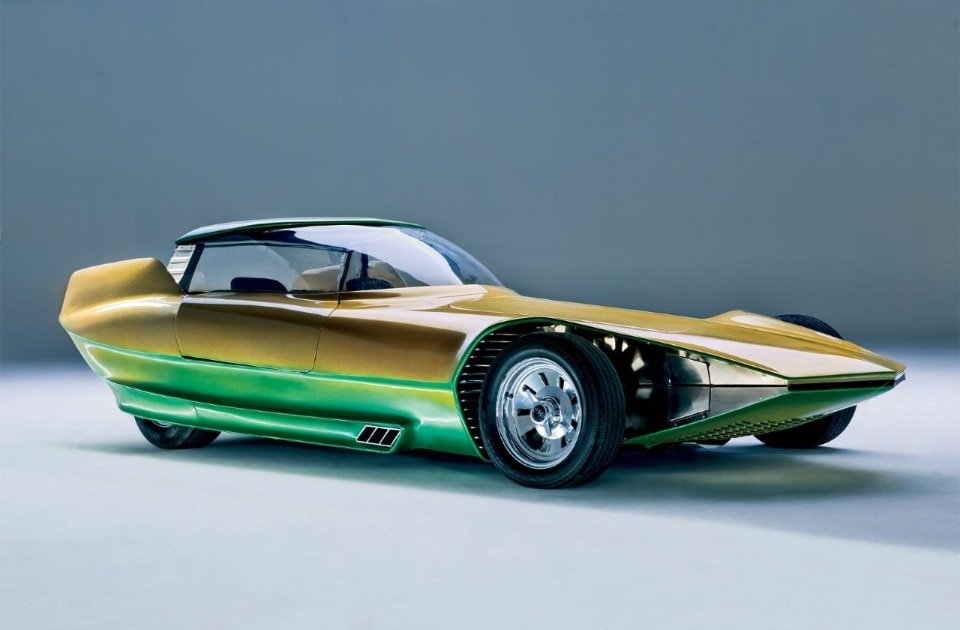
Built in 1965 by Gene Winfield, the Reactor is a one-off masterpiece of creativity and innovation. It had an aluminum body, height-adjustable suspension, and a front-wheel-drive Oldsmobile Toronado powertrain. Thanks to its spaceship look, it appeared in various TV shows such as Star Trek and Batman among others. A shining example of radical creativity in the American custom car culture.
10. Mercedes-Benz C111 (1969-1979)
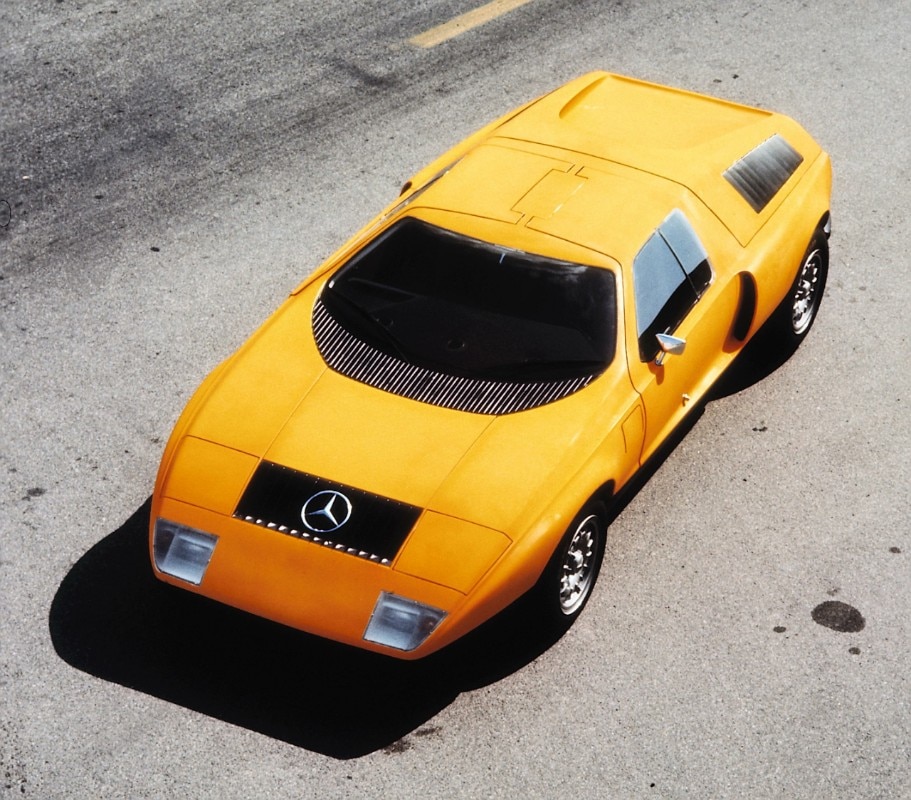
Developed between 1969 and 1979, the Mercedes-Benz C111 series served as a testbed for Wankel rotary engines, turbodiesels, and new aerodynamic designs. Its fiberglass body and iconic gull-wing doors – designed under the guidance of Bruno Sacco and Josef Gallitzendörfer – are what made the C111 iconic. Despite the hype, it never entered production, but it remains an emblem of innovation and one of the most daring prototypes in Mercedes-Benz history. You can see it today at the Mercedes-Benz Museum in Stuttgart.
11. Pininfarina Modulo (1970)
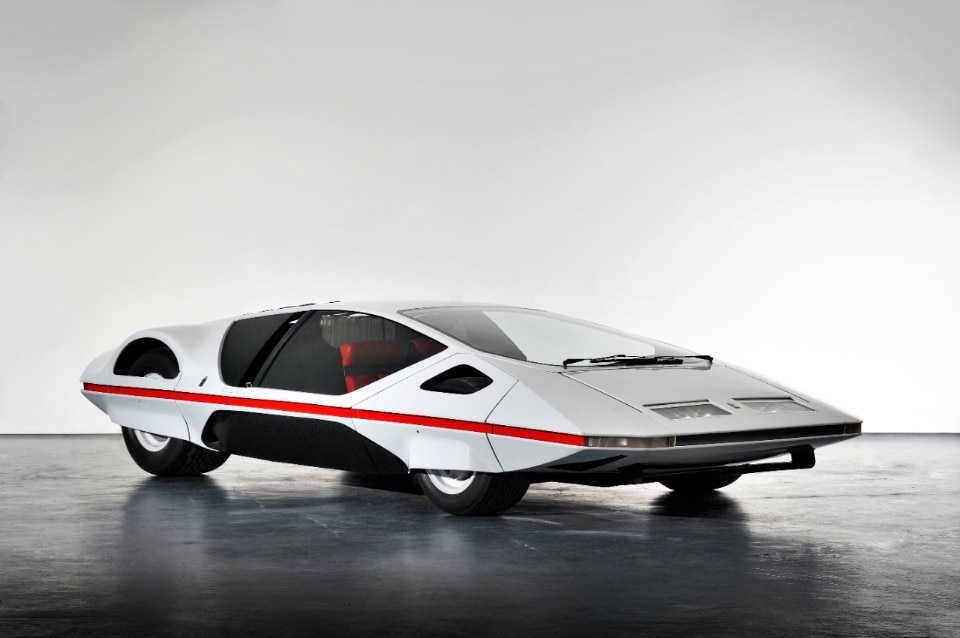
The Modulo is a futuristic prototype designed by Paolo Martin for Pininfarina unveiled at the 1970 Geneva Motor Show that amazes for its wedge shape and space-like appearance. Based on the Ferrari 512 S, it boasted a 550 hp V12 engine capable – at least in theory – of reaching 350 km/h. Entry was via a sliding canopy. It was a visionary and revolutionary car that still remains today one of the most iconic designs ever made. Today, the Modulo belongs to American collector James Glickenhaus.
12. Vauxhall SRV (1970)
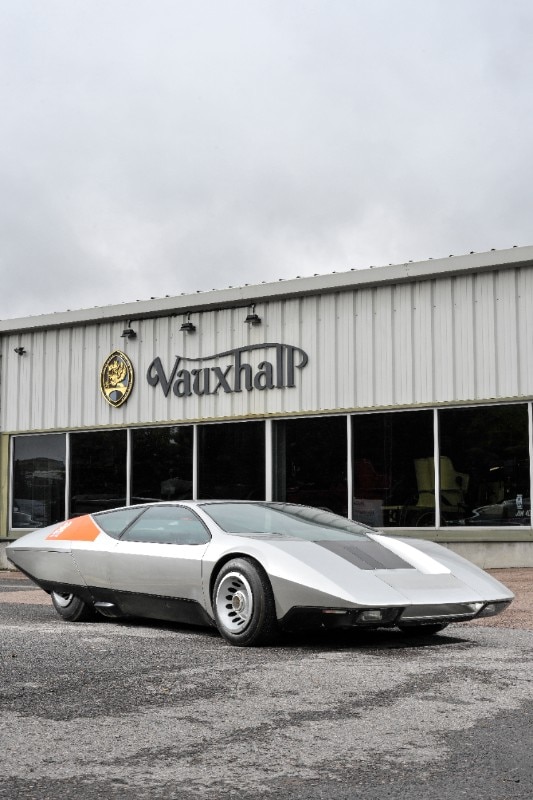
Short for Styling Research Vehicle, the Vauxhall SRV debuted at the 1970 London Motor Show. Boasting a dramatic wedge design reminiscent of Marcello Gandini’s work, it was the result of a collaboration between Wayne Cherry and Chris Field, incorporating numerous futuristic solutions. It featured advanced aerodynamics, electrically adjustable seats, and movable instruments. Never intended for production, it was designed to showcase the technological and stylistic potential of Vauxhall — then part of General Motors, and now part of Stellantis.

